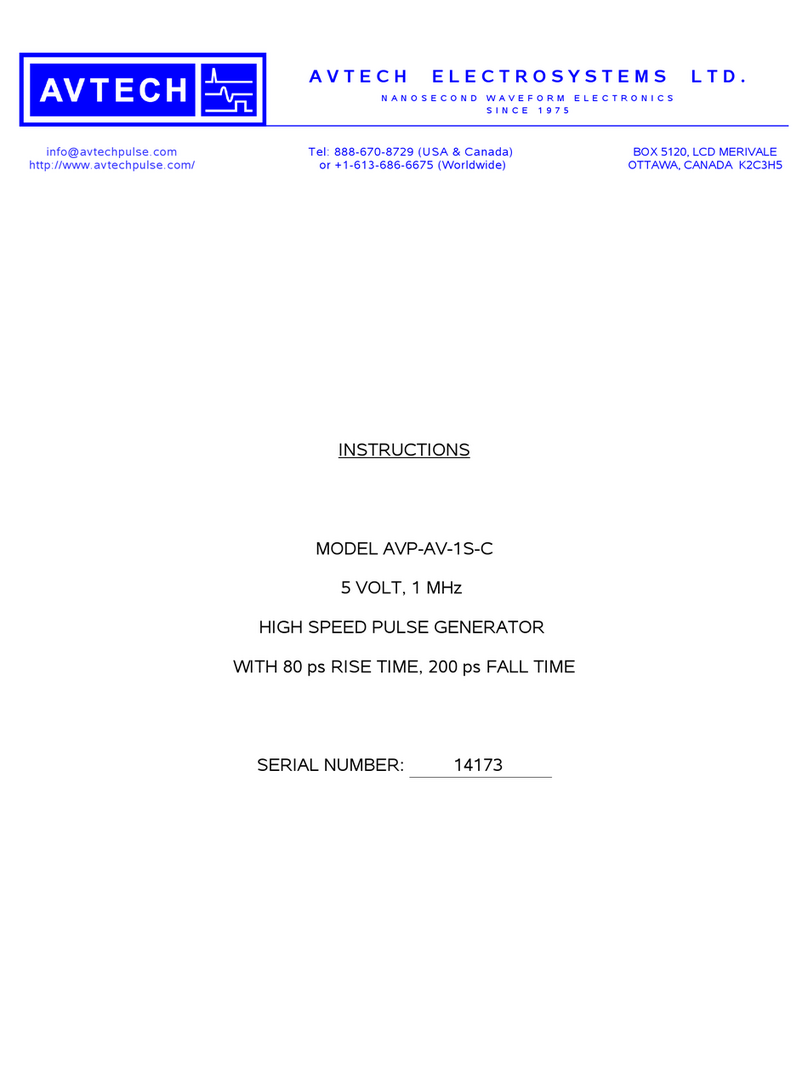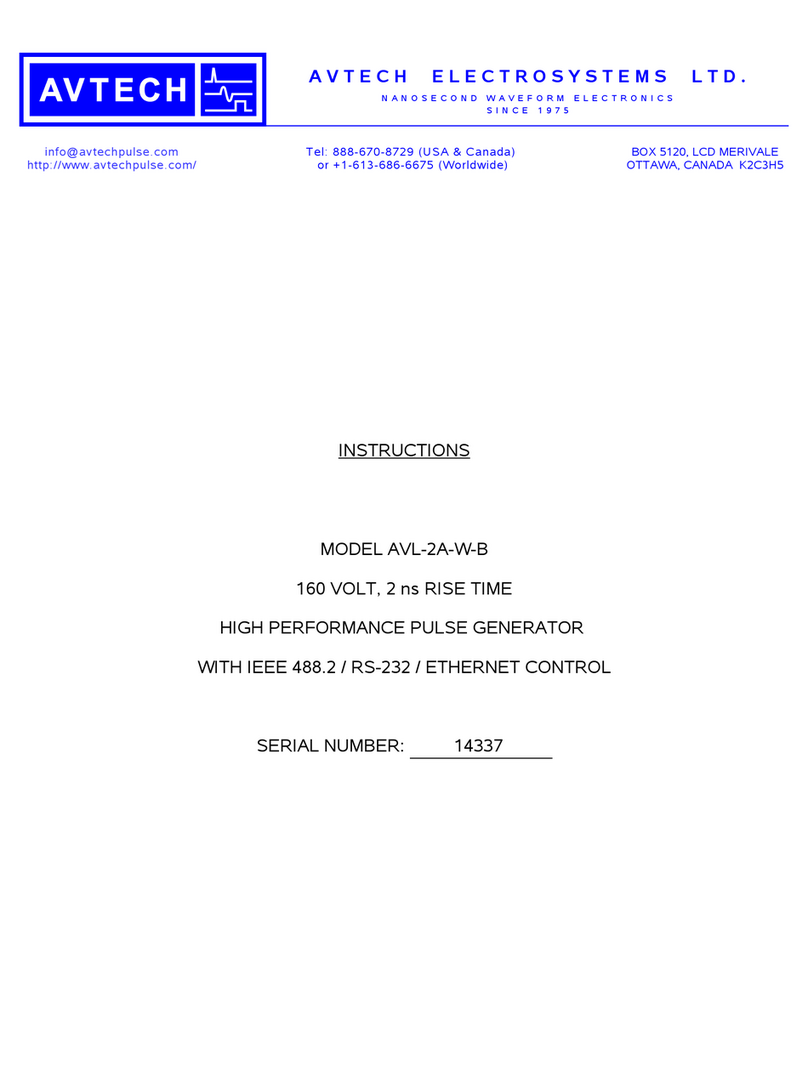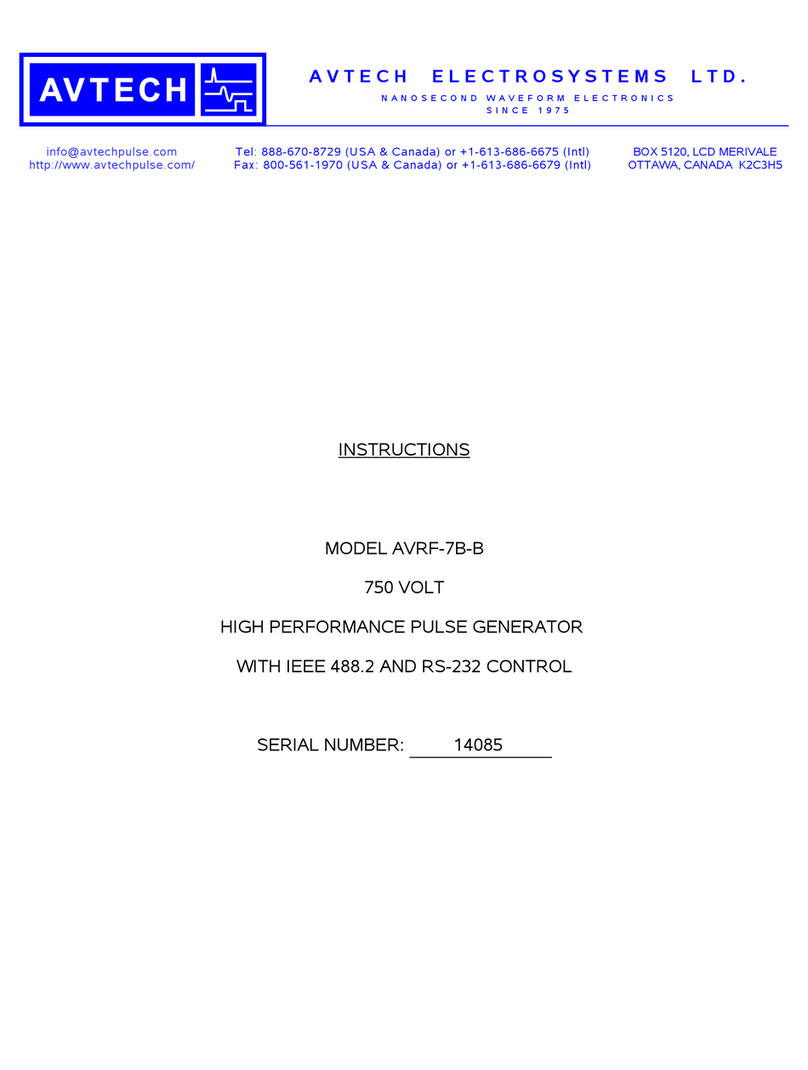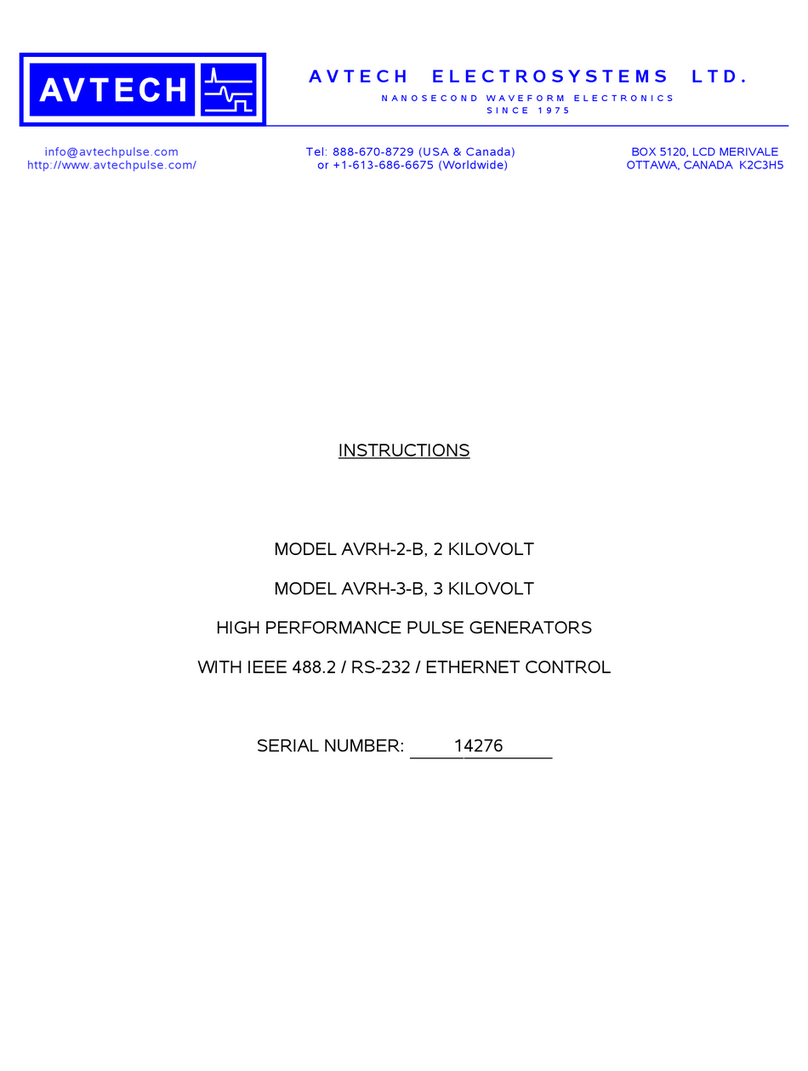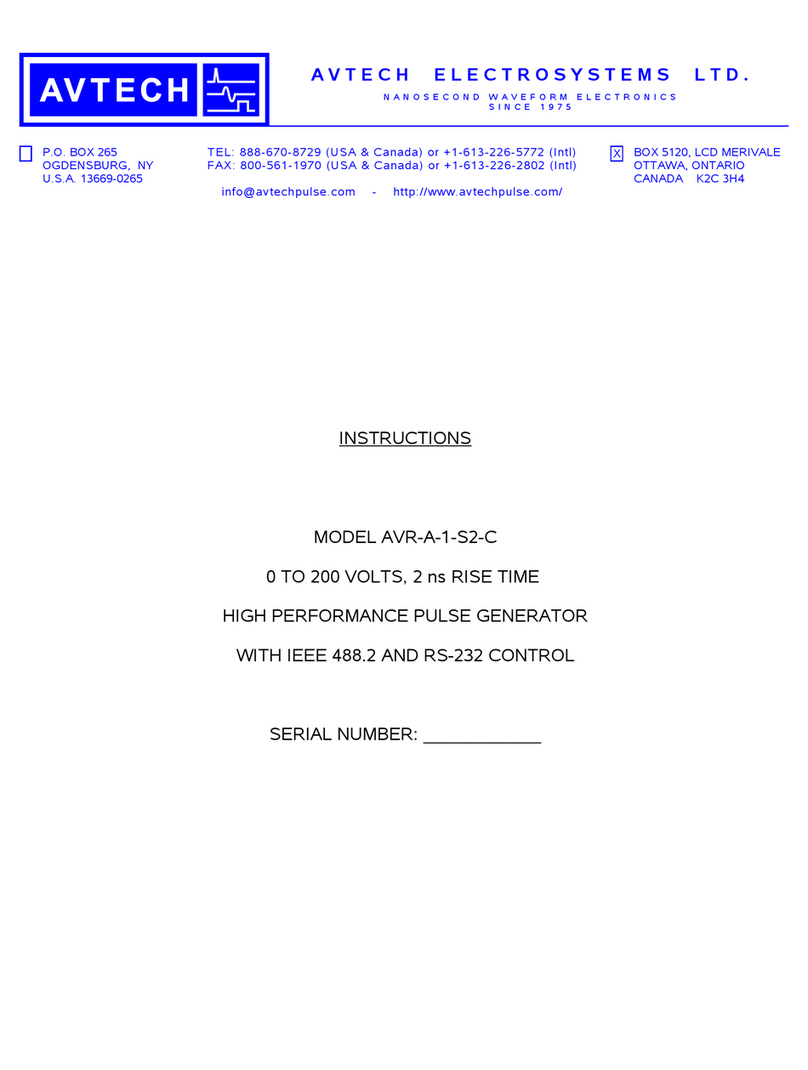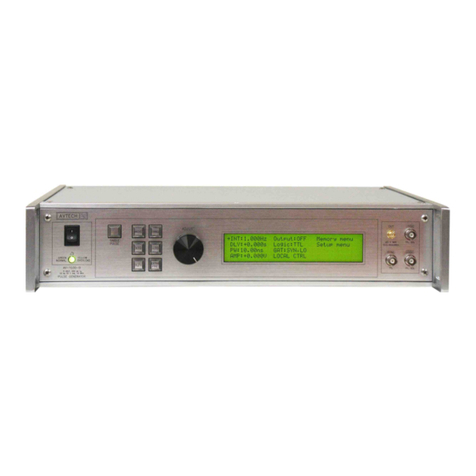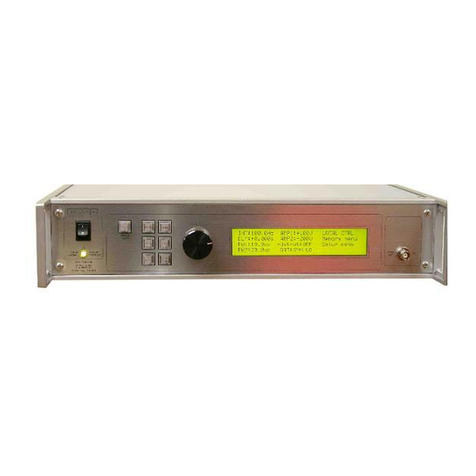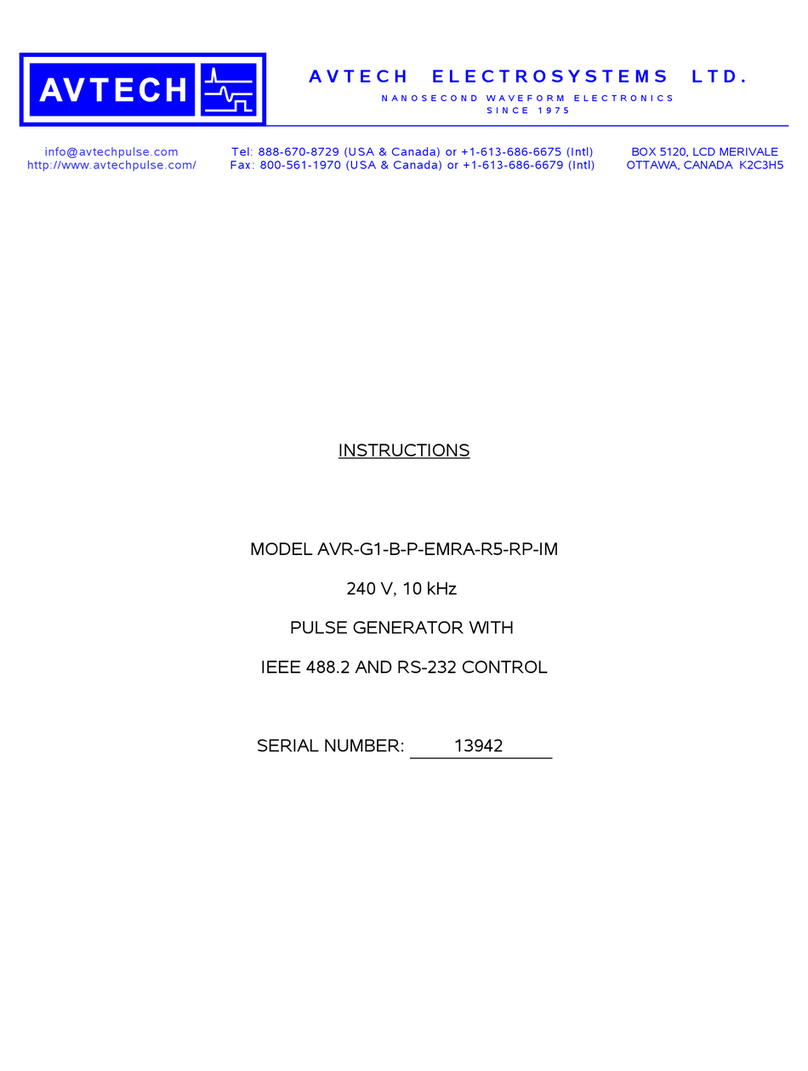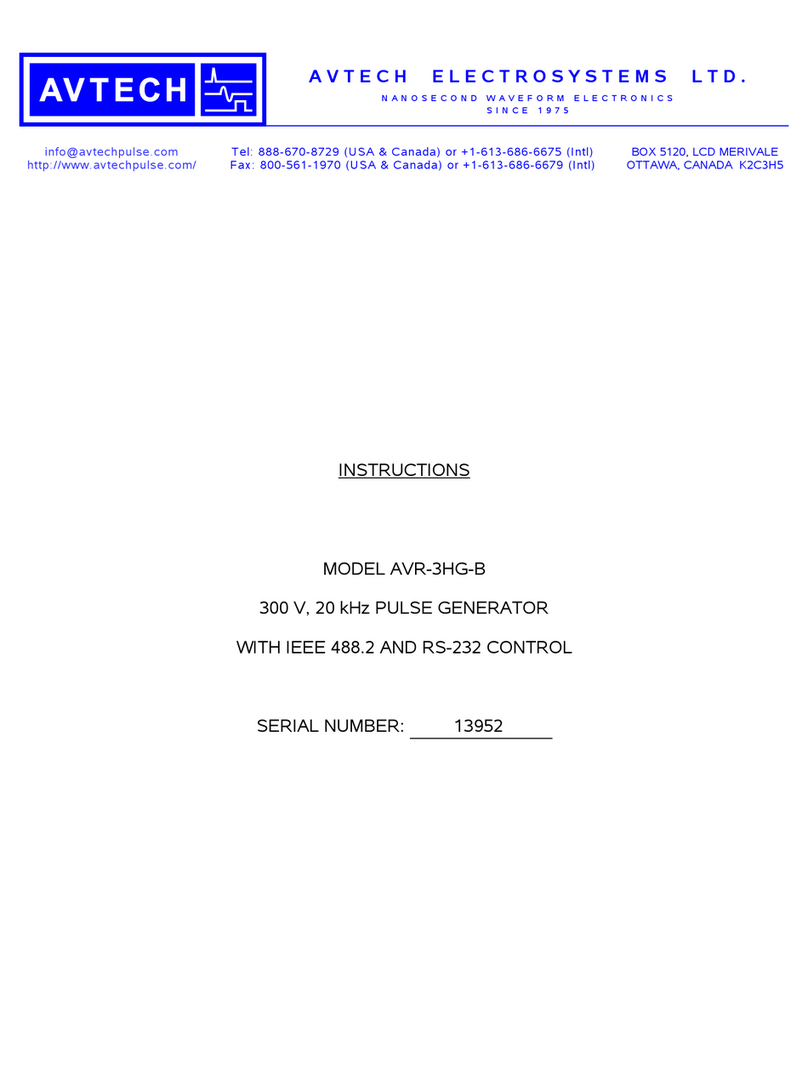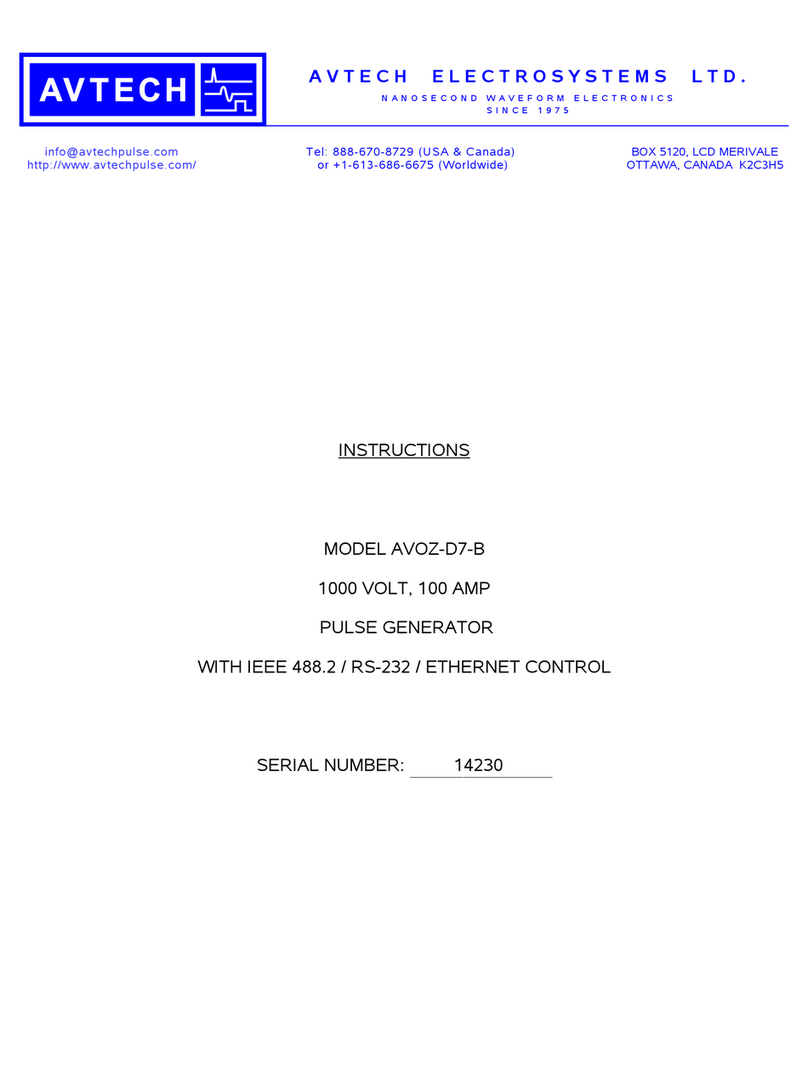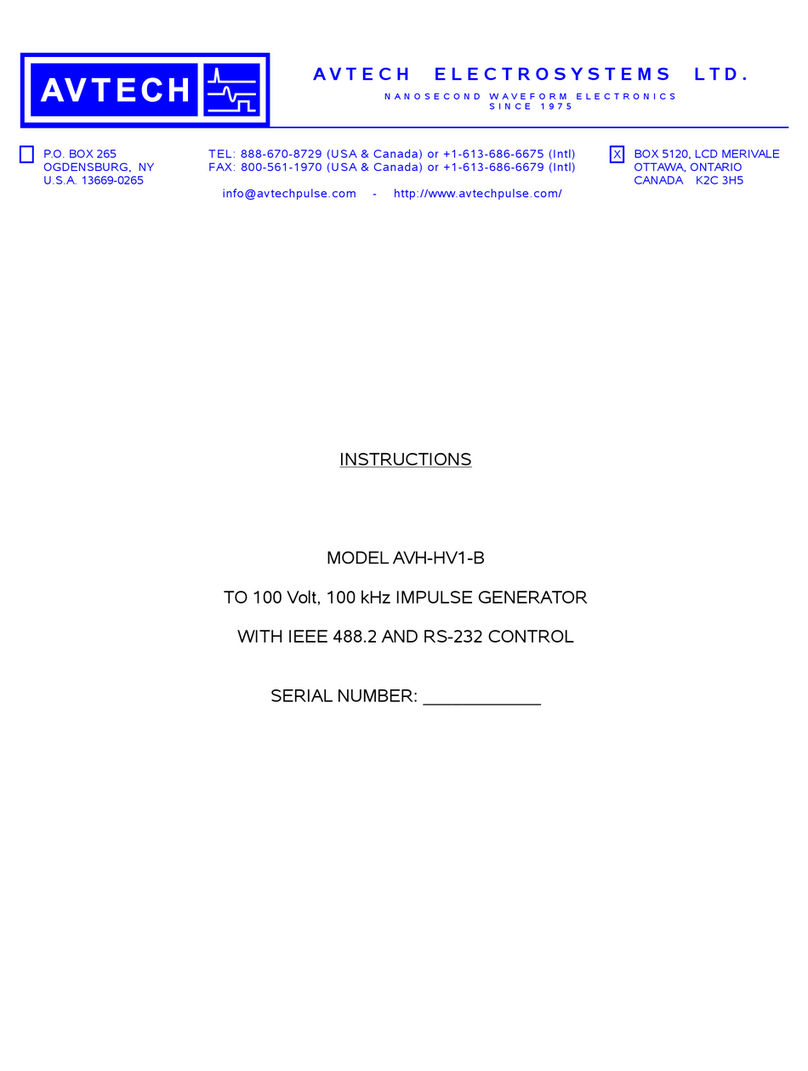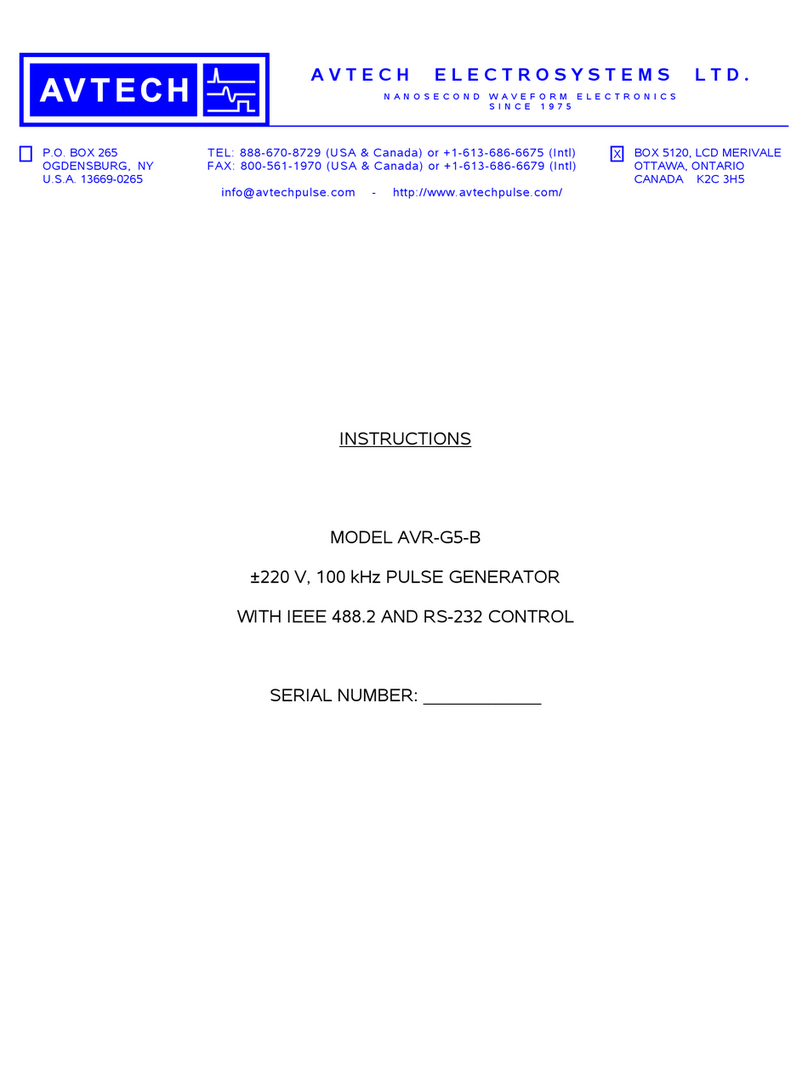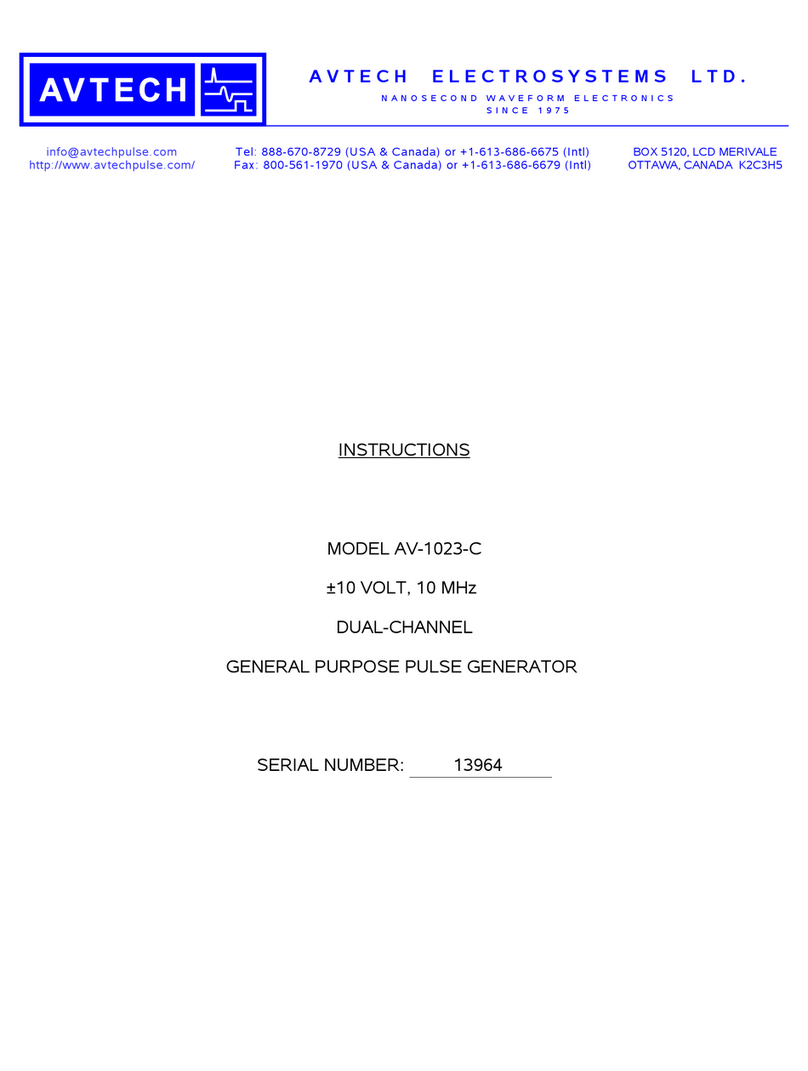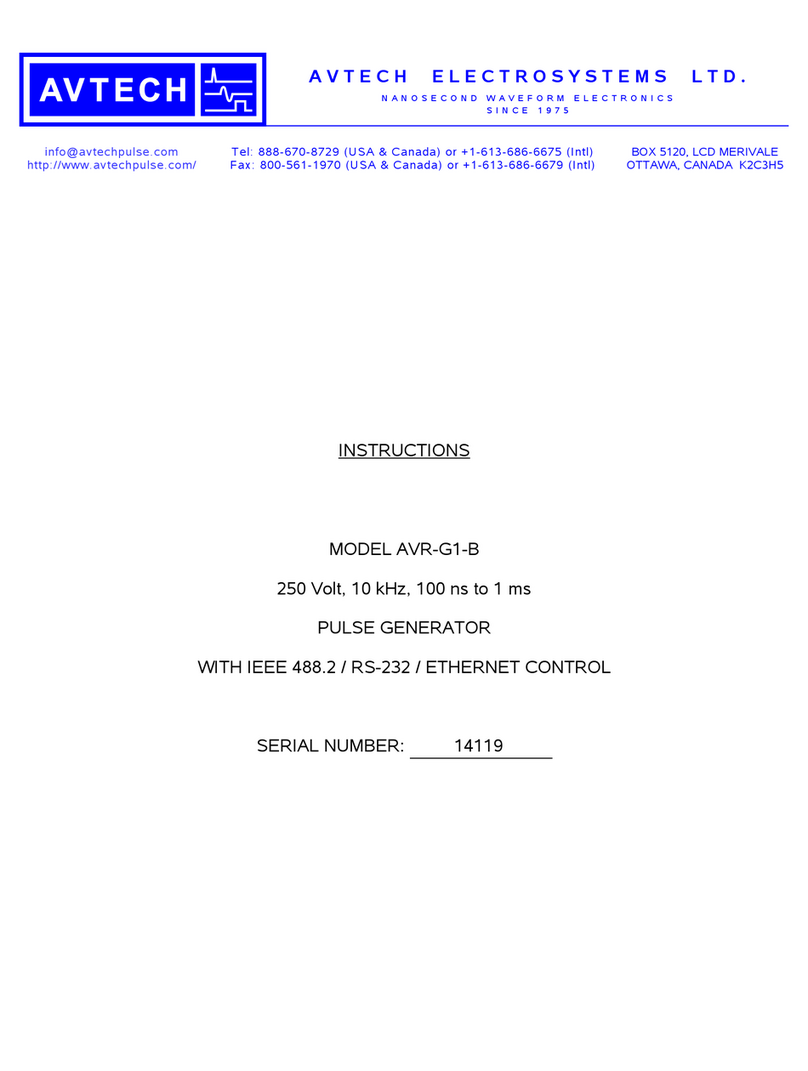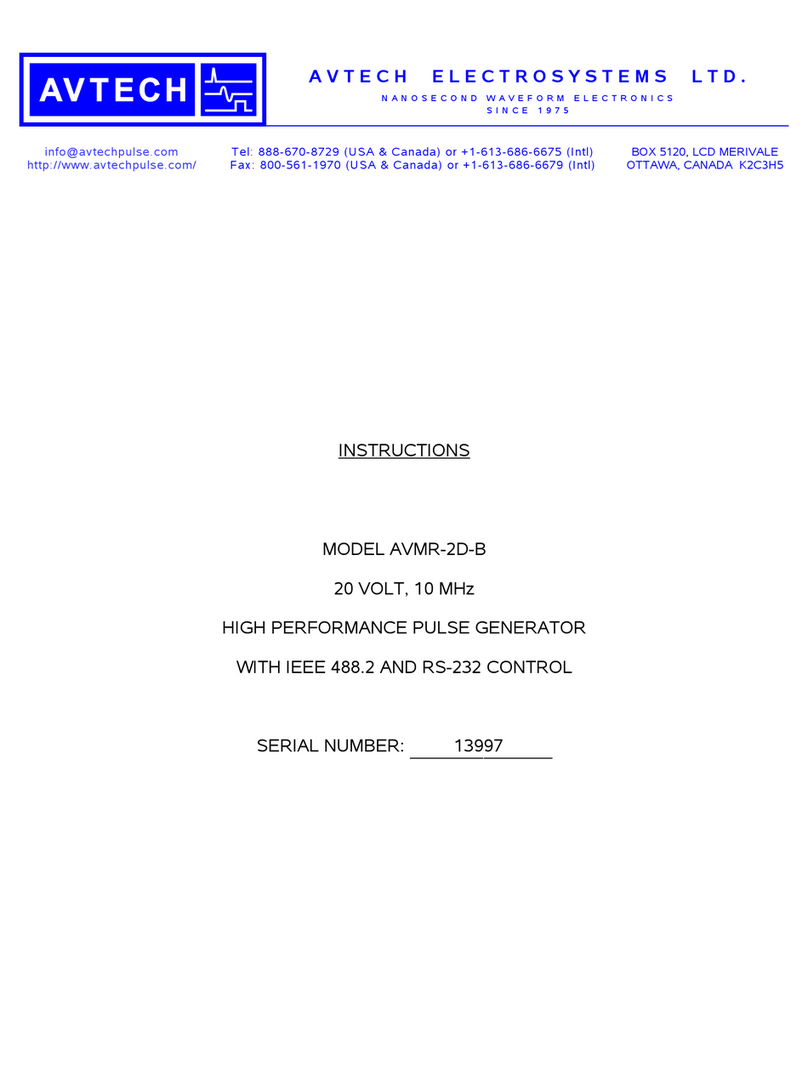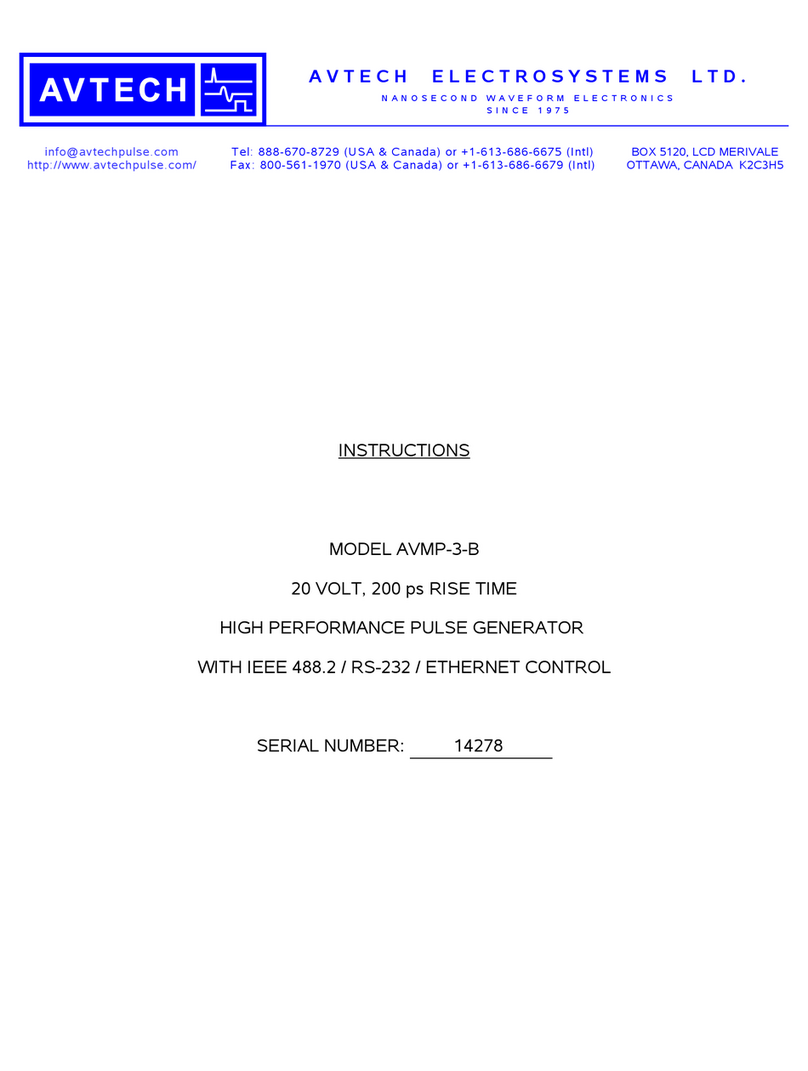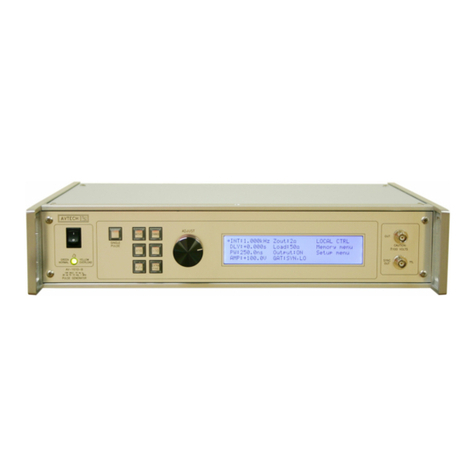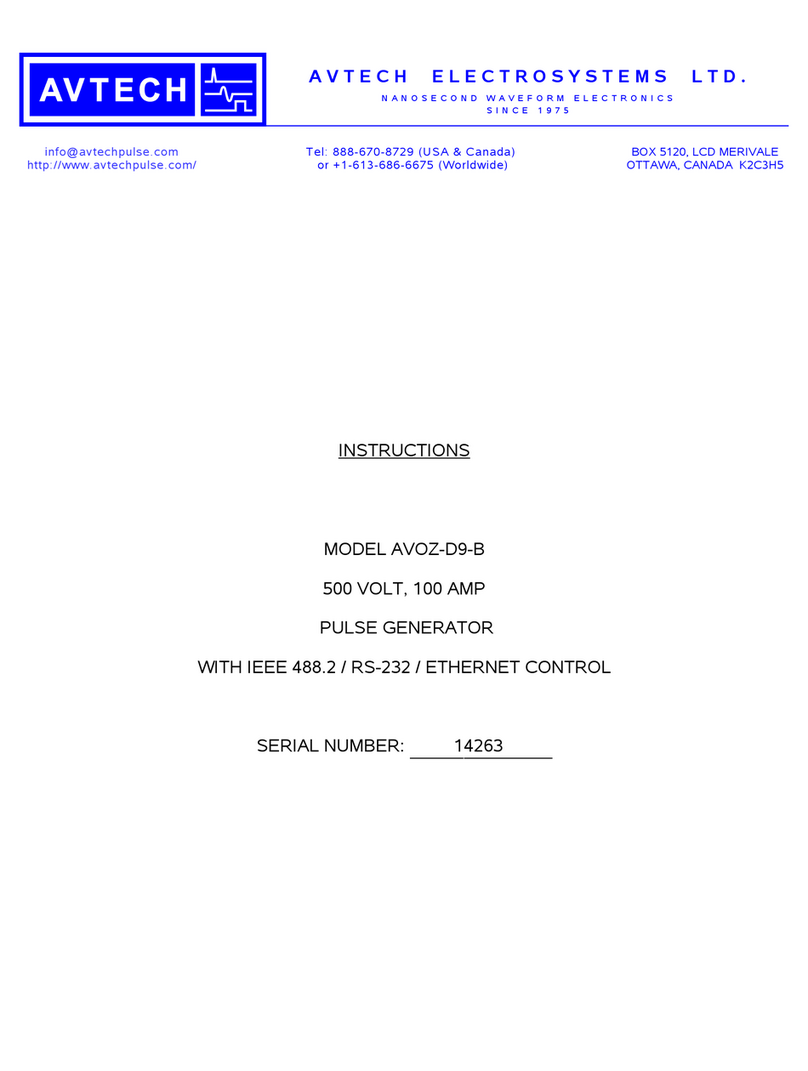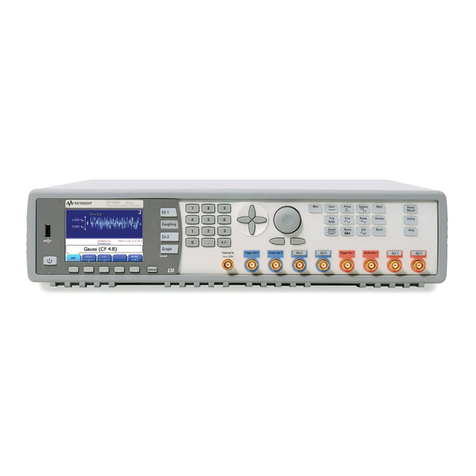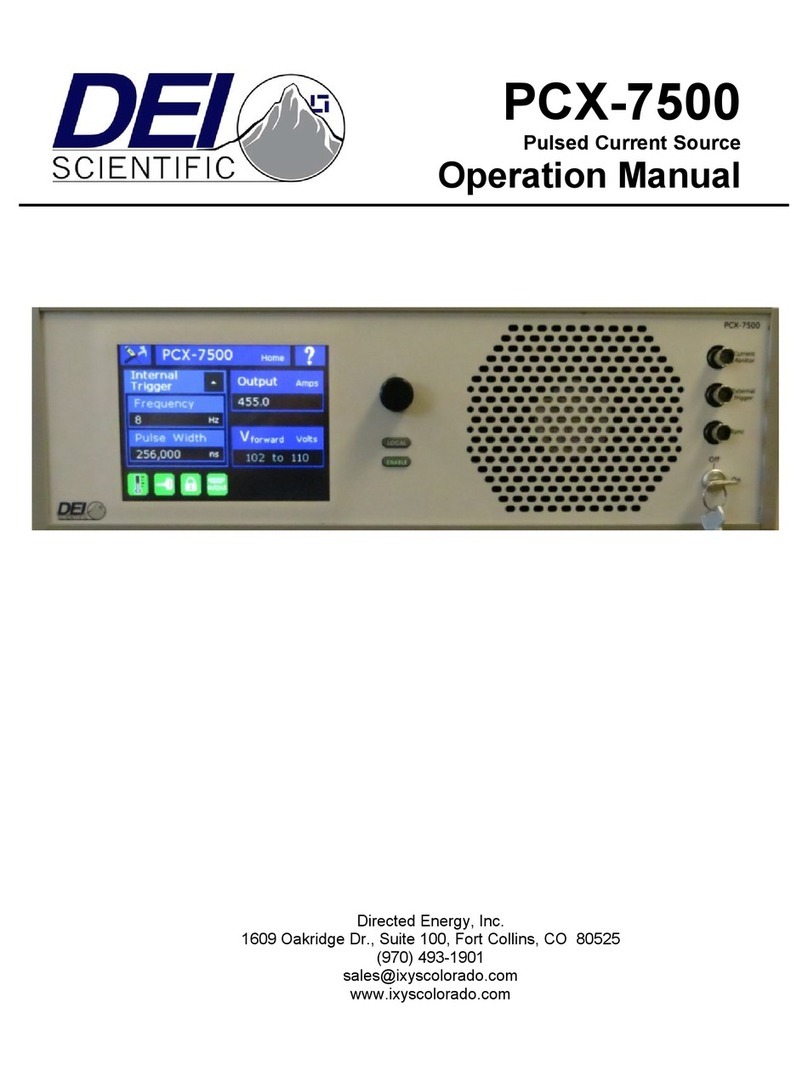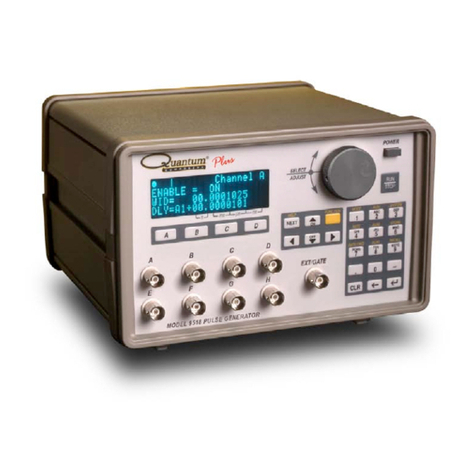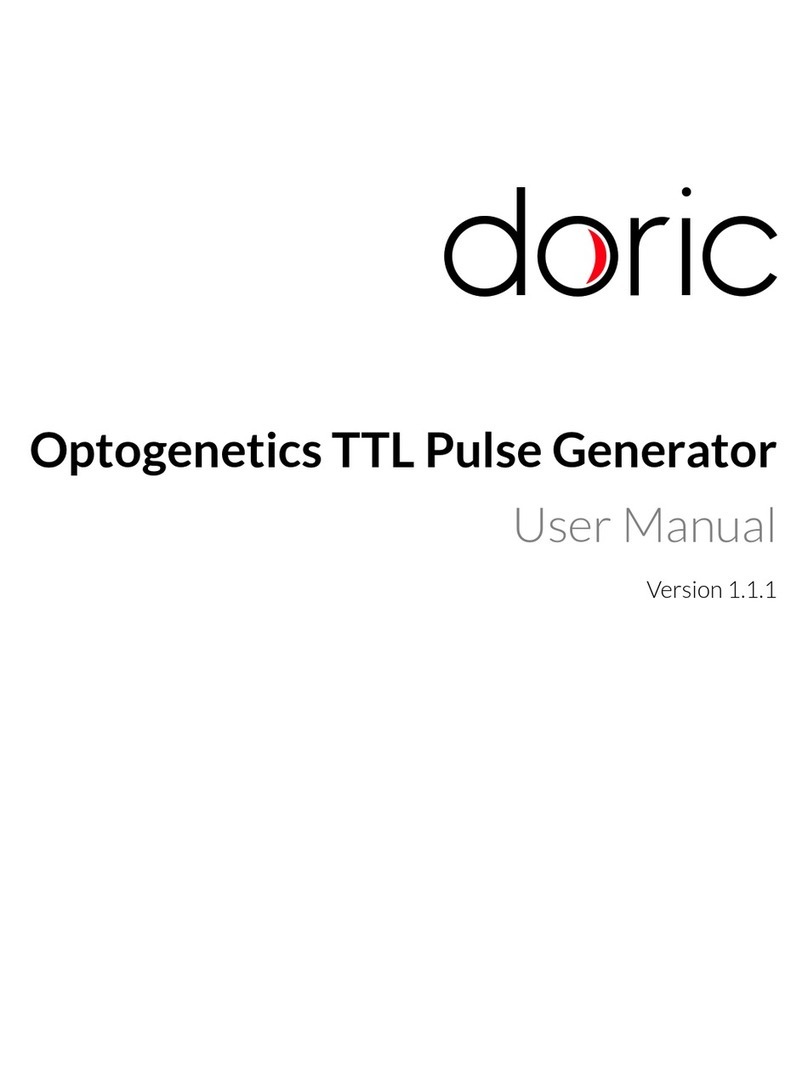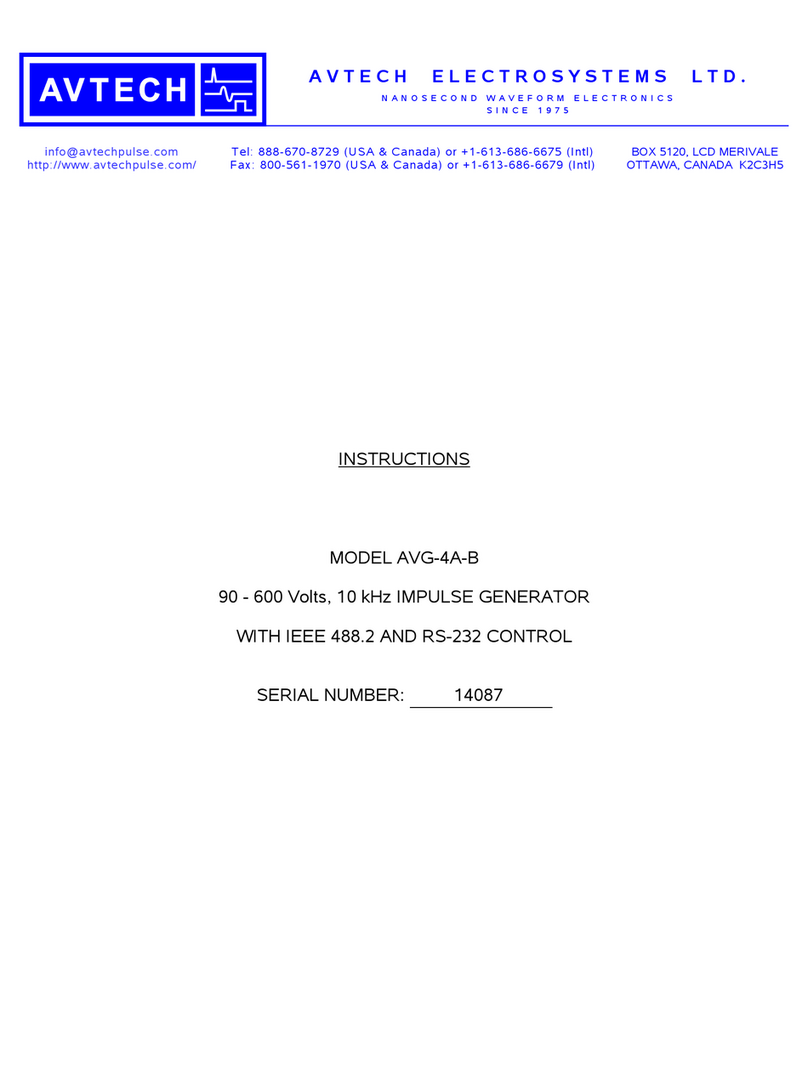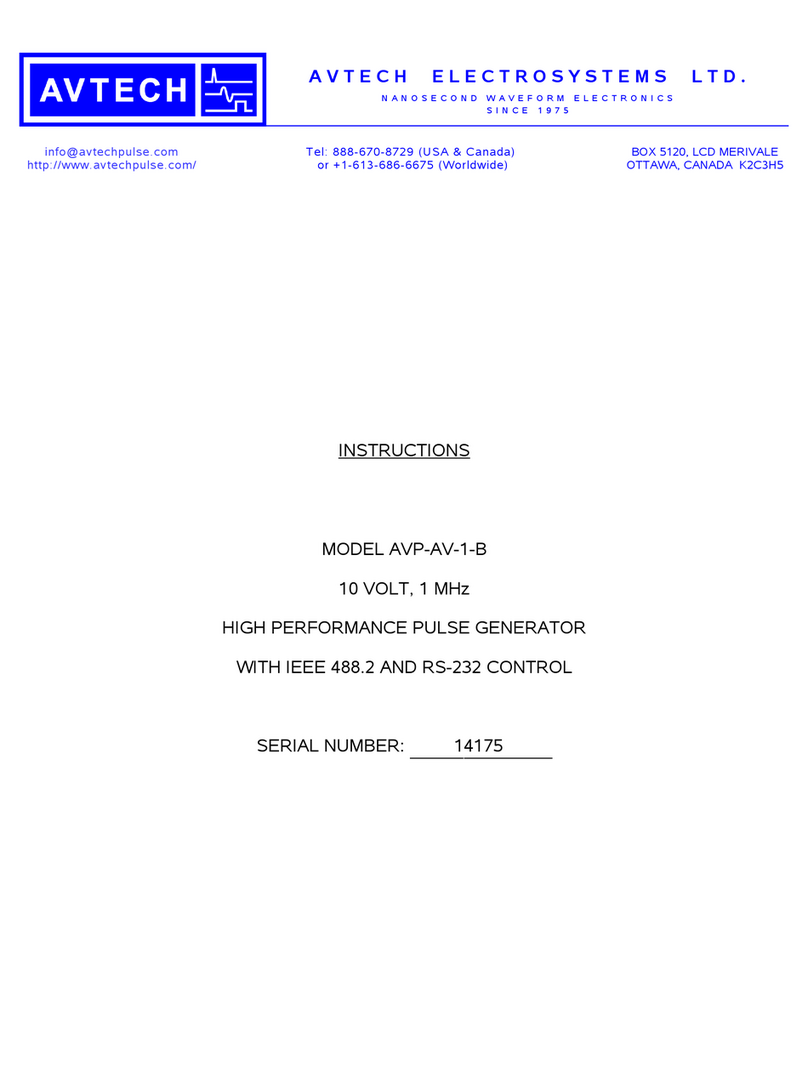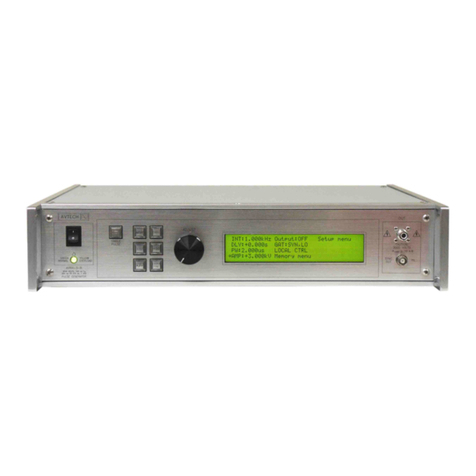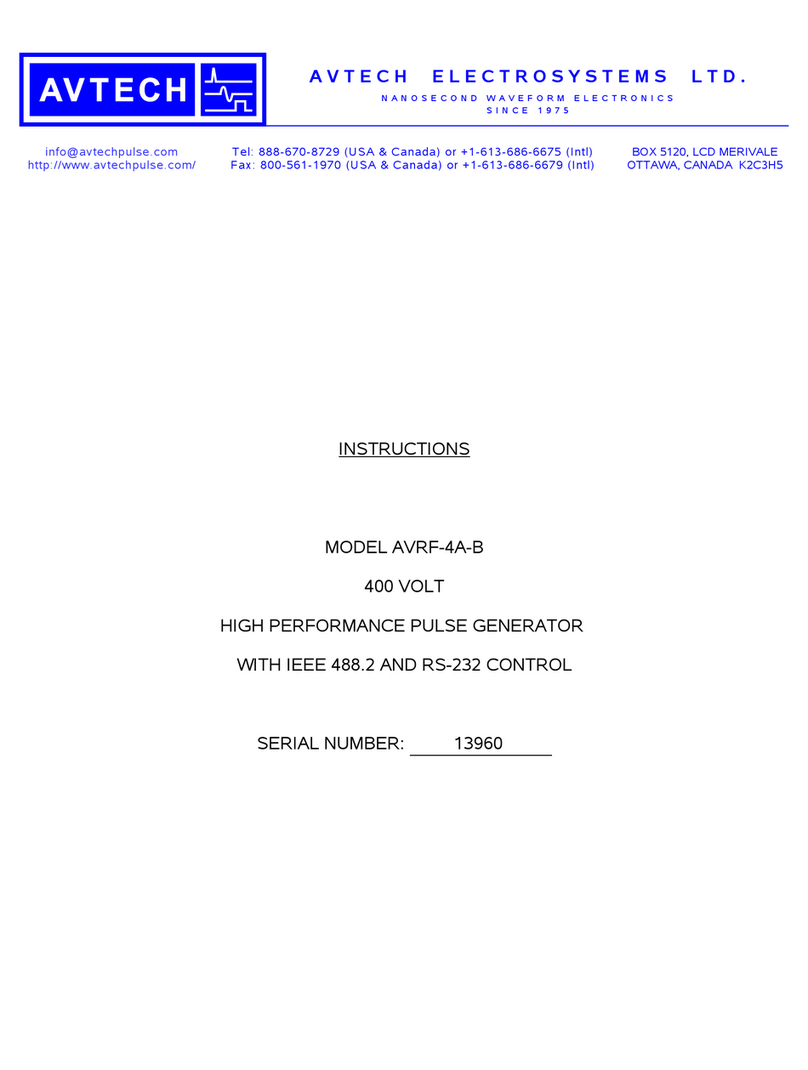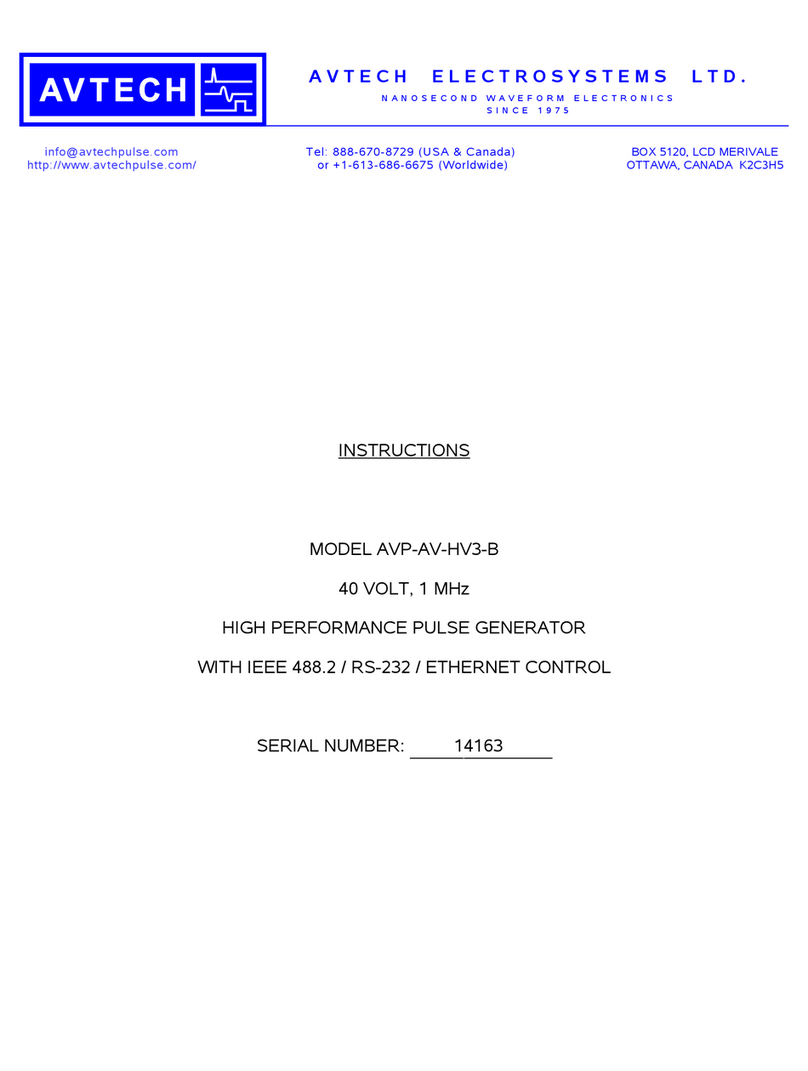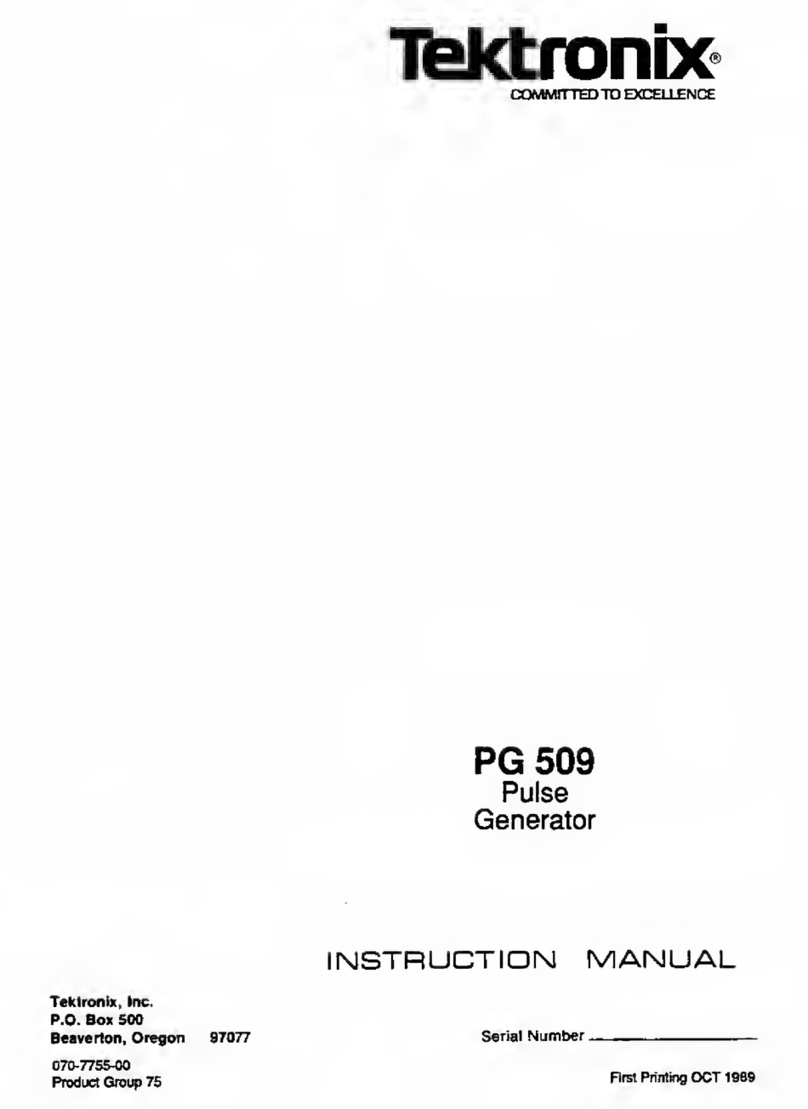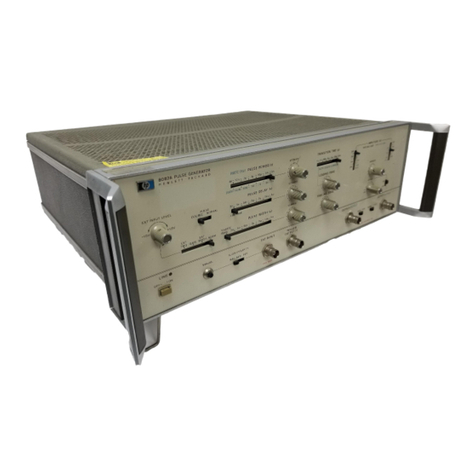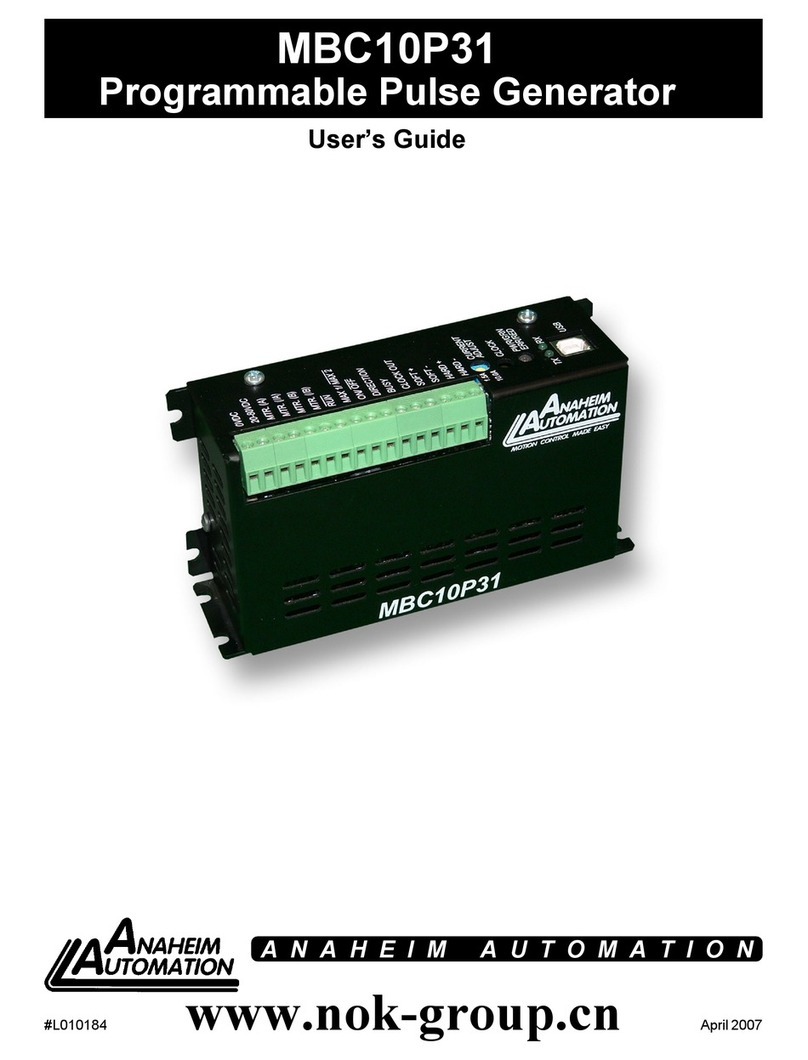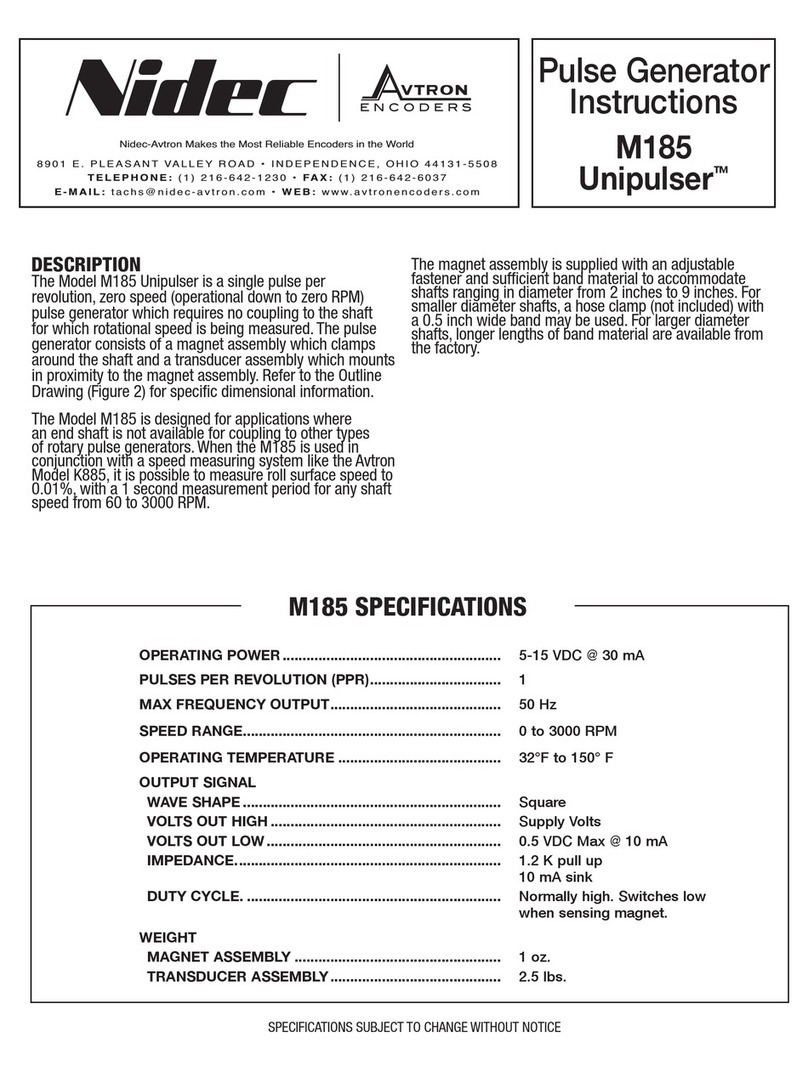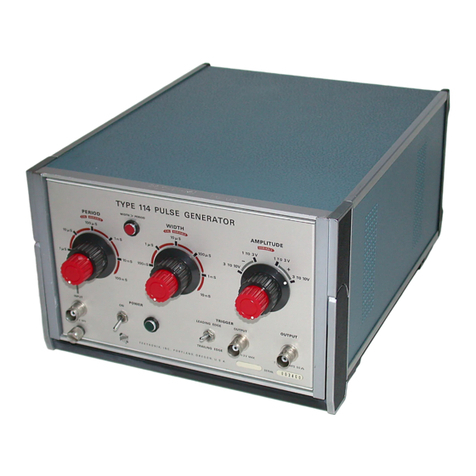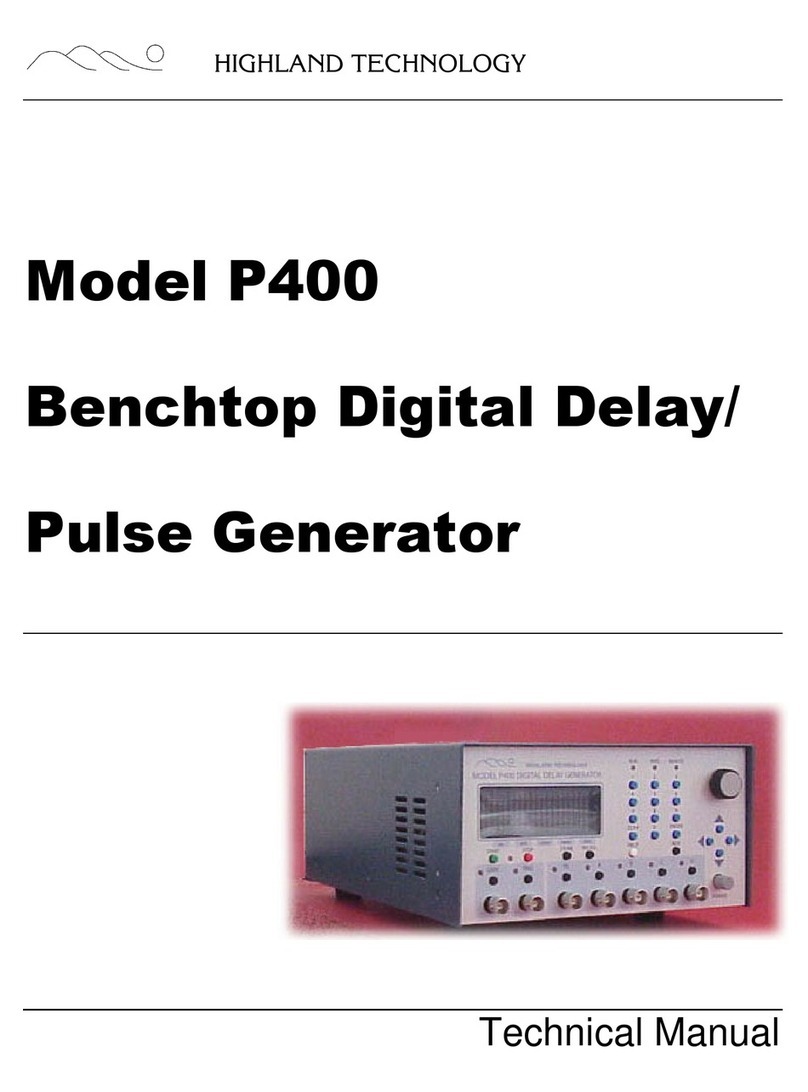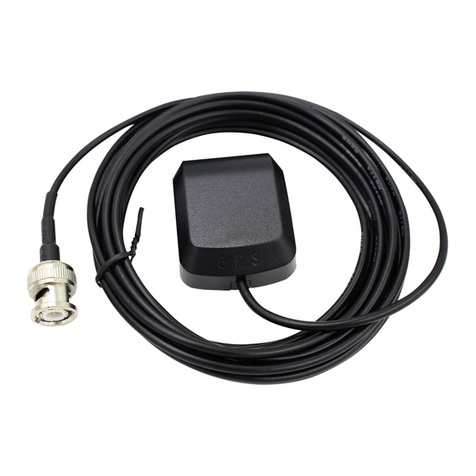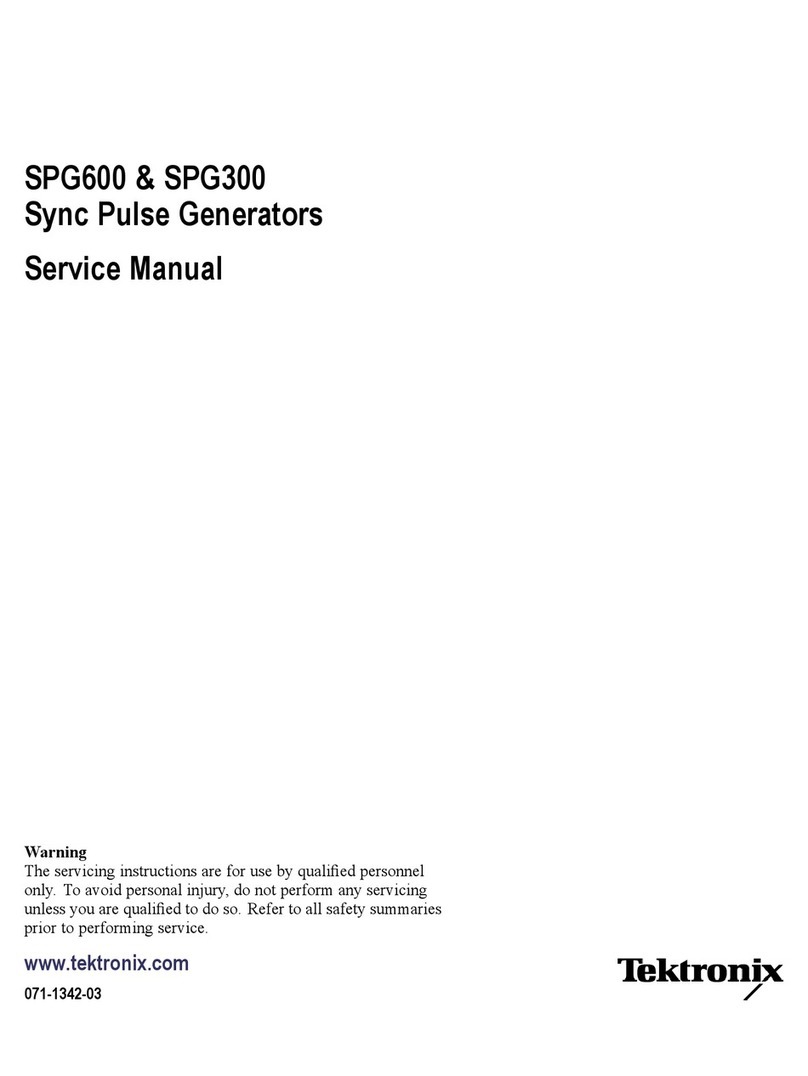SPECIFICATIONS
Model: AVR-AHF-1-B2
Amplitude3,4,5: (50 Ohm load) < 10 to 250 Volts
Pulse width (FWHM)3,5: 50 to 500 ns
PRF: 0 to 100 kHz
Rise & fall times (20%-80%): ≤ 10 ns
Maximum duty cycle: 4%
Maximum avg. output power: 50 Watts
Required load: ≥ 50 Ω
Polarity6: Positive or negative or both (specify)
Front-panel controls: Keypad and adjust knob, and PIB / RS-232 control
PIB and RS-232 control2: Standard on -B units.
LabView drivers: Check http://www.avtechpulse.com/labview for availability and downloads
Ethernet port, for remote
control using VXI-11.3, ssh,
telnet, & web:
Optional9. Recommended as a modern alternative to PIB / RS-232.
See http://www.avtechpulse.com/options/vxi for details.
Settings resolution: The resolution of the timing parameters (pulse width, delay, period) varies, but is always better
than 0.15% of (|set value| + 20 ns). The amplitude resolution is < 0.1% of the maximum
amplitude.
Settings accuracy: Typically ± 3% (plus ±1V or ± 2 ns) after 10 minute warmup. For high-accuracy applications
requiring traceable calibration, verify the output parameters with a calibrated oscilloscope.
Propagation delay: ≤ 100 ns (Ext trig in to pulse out)
Jitter: ± 100 ps ± 0.03% of sync delay, Ext trig in to pulse out
DC offset or bias insertion: Option available. Apply required DC offset or bias in the range of ± 50 Volts,
(250 mA max) to back panel solder terminal. See note 7.
Trigger modes: Internal trigger, external trigger (TTL level pulse, > 10 ns, 1 kΩ input impedance),
front-panel “Single Pulse” pushbutton, or single pulse trigger via computer command.
Variable delay: 0 to 1.0 seconds, for all trigger modes (including external trigger).
Sync output: > +3 Volts, > 50 ns, will drive 50 Ohm loads
ate input: Synchronous or asynchronous, active high or low, switchable. Suppresses triggering when active.
Connectors: Out, Trig, Sync, ate: BNC
Dimensions: 100 mm x 430 mm x 375 mm (3.9” x 17” x 14.8”)
Power requirements: 100 - 240 Volts, 50 - 60 Hz
Chassis material: Cast aluminum frame & handles, blue vinyl on aluminum cover plates
Mounting: Any
Temperature range: +5°C to +40°C
1) -C suffix indicates stand-alone lab instrument with internal clock and line powering. No suffix indicates miniature module requiring DC power and
external trigger. (See http://www.avtechpulse.com/formats for details of the four basic instrument formats).
2) -B suffix indicates IEEE-488.2 PIB and RS-232 control of amplitude, pulse width, PRF and delay (See http://www.avtechpulse.com/gpib).
3) For analog electronic control (0 to +10V) of the amplitude, suffix model number with -EA. Electronic control units also include standard front-panel
controls.
4) For operation at amplitudes of less than 10% of full-scale, best results will be obtained by setting the amplitude near full-scale and using external
attenuators on the output.
5) For 10-turn dial control of pulse width (or amplitude) suffix model number with -PWT (or -AT). For -C units only.
6) Indicate desired polarity by suffixing model No. by -P or -N (i.e. positive or negative) or -PN for dual polarity option. Polarity reversal is achieved by
means of a two-position switch on -C units and by keypad control on -B units.
7) For DC offset option suffix model number with -OS.
8) The instrument may be damaged by load impedances outside this range.
9) Add the suffix -VXI to the model number to specify the Ethernet port.
7
